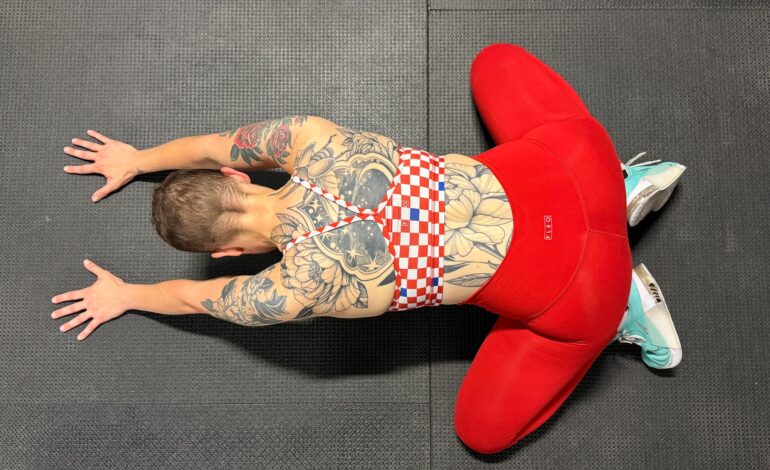Unlock Hip Mobility: 6 Effective Stretches to Alleviate Pain

As people age, the variety of movements they engage in often diminishes, leading to tightness in the hips and discomfort in associated areas like the back and knees. Physical therapist Patrick Suarez from Albany, New York, highlights how modern lifestyles, characterized by prolonged sitting and limited lateral movement, contribute to this issue. He notes that reduced hip mobility can result in compensatory mechanisms that place undue stress on the knees and lower back.
The hip, known for its flexibility, is supported by the largest muscle in the body, the gluteus maximus. When hip function declines, the body reallocates work to surrounding joints, often causing pain. “When you have issues at the hip, you’re generally going to feel it at the knee or at the low back,” Suarez explains. This misallocation can lead to repetitive strain injuries and chronic pain. To combat this, he recommends six specific stretches aimed at improving hip mobility and relieving discomfort.
Understanding Hip Tightness and Its Impact
The consequences of hip tightness extend beyond the hips themselves. As Suarez points out, weak glutes and tight connective tissues can lead to issues in the knees and lower back. For instance, when the hips lack strength, individuals may unconsciously shift to using their backs, which can lead to soreness and injuries over time.
This can be particularly problematic for long-distance runners, whose knees may begin to rotate inappropriately due to insufficient hip stability. “You’ll notice it when you’re trying to come out of a deep knee flexion,” Suarez adds, emphasizing how tight hips can contribute to knee buckling and the search for gluteal engagement during movement.
Six Stretches to Enhance Hip Mobility
Suarez recommends incorporating the following stretches into a regular routine to enhance hip strength and flexibility. It is essential to consult with a healthcare professional if experiencing significant pain before starting any new exercise regimen.
1. **Shin Box**: This stretch promotes both internal and external hip rotation. Begin seated with one leg in front and the other behind, both knees bent at 90 degrees. Engage your glutes and lift your hips forward while keeping your torso upright. Perform an equal number of repetitions on both sides to address tightness.
2. **Frog Stretch with Internal Rotation**: Start on all fours, knees wider than hip-width apart, and heels touching. As you shift your hips back, internally rotate one leg so the foot points outward, then return to the starting position. Alternate sides for balanced mobility.
3. **Single-Leg Bridge with Knee Drive**: Lie on your back with one foot flat on the floor and the opposite knee drawn in. Raise your hips by pushing through the heel of the grounded foot, holding briefly at the top before lowering. This unilateral exercise improves strength and balance.
4. **Lateral Band Walk**: Using a resistance band above the knees, adopt a half-squat position. Step sideways with one foot, followed by the other, maintaining the squat form. This exercise enhances lateral strength and stability.
5. **Seated Hip Internal Rotation**: Sit on a bench, squeezing a foam roller or yoga block between your knees. Internally rotate your hips by flaring your feet outward while keeping your core engaged. This movement targets the internal rotators crucial for maintaining hip health.
6. **Copenhagen Plank**: This advanced stretch targets the inner thigh adductors. Lying on your side with your forearm supporting your weight, place the top foot on a stable surface and lift your hips, creating a straight line from shoulder to knee. Perform equal repetitions on both sides, modifying as necessary.
These stretches not only aim to relieve tightness but also help prevent potential injuries associated with limited hip mobility. Regular practice can significantly enhance overall lower-body function, contributing to improved quality of life.
In conclusion, addressing hip tightness through targeted stretches is vital for maintaining mobility and preventing pain in the knees and lower back. Incorporating these exercises into daily routines can lead to more active, pain-free living.






